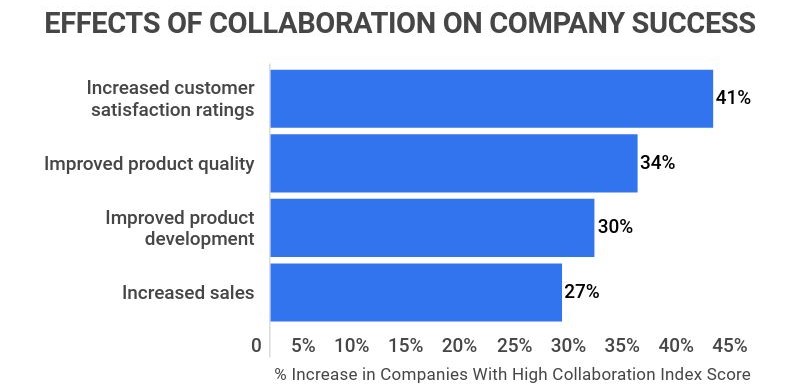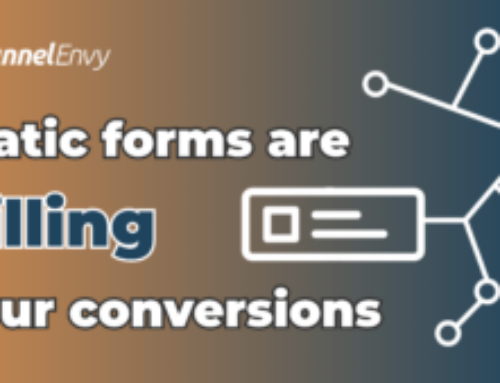Capturing the attention of fickle customers is hard enough, right? The only thing more frustrating than mediocre B2B funnel results is realizing that the root of the problem is the internal lack of communication between your teams.
Unfortunately, internal communication gaps between teams often create customer friction, leading to inefficiencies and missed opportunities. If you wonder how to remove B2B funnel friction by improving team communication, this post is for you.
We will explore the common symptoms of a disjointed conversion funnel, the negative impacts of siloed teams, and how a full-funnel conversion optimization approach can improve performance and boost sales and marketing funnel conversions.
Symptoms of a Disjointed Funnel
A disjointed funnel can show several signs of distress. Some of the symptoms of poor internal collaboration include:
Inconsistent Messaging
When marketing and sales teams are not aligned, the messaging conveyed to potential clients can become inconsistent, leading to confusion and mistrust.
For instance, the marketing team might promote a product as a comprehensive solution while the sales team focuses on cost-effectiveness. This discrepancy can make prospects question the reliability of the information provided, causing them to lose confidence in the company.
Organizations must establish a unified messaging strategy that all departments adhere to to avoid this, ensuring that potential customers receive a coherent and persuasive message at every touchpoint.
Disjointed User Experience
A lack of coordination across touchpoints can result in a fragmented user experience for your target audience, reducing engagement and increasing drop-off rates. Imagine a scenario where a prospect engages with a company’s content on social media, only to find a completely different narrative when they visit the website or talk to a sales representative.
This inconsistency can create a jarring experience, making it difficult for the prospect to trust the company. If businesses want to mitigate this, they must map out the ideal customer journey and try to reduce friction in every interaction. From the initial contact to website design, customer service, and final purchase, they should provide a seamless and consistent experience.
Misaligned Goals
Without shared objectives, departments may work towards different goals, hindering overall funnel efficiency and success. For example, the marketing team might focus on generating a high volume of leads via search engine optimization, while the sales team prioritizes closing high-quality leads.
This misalignment can lead to frustration and inefficiencies, as one team’s efforts may not support the goals of the other. To address this issue, companies need to establish clear, company-wide goals and KPIs that all teams can work towards. This transparency ensures that every department is aligned and contributes to the overall success of the funnel.
Data Silos
Isolated data systems prevent a holistic view of the prospect journey, making it challenging to optimize marketing strategies effectively. When data is scattered across different systems and departments, gaining insights into customer behavior and preferences becomes challenging.
Integrating data systems and promoting data sharing across departments can help companies obtain a comprehensive view. This enables more effective analysis and decision-making, ultimately enhancing the funnel’s efficiency and effectiveness.
Lack of Attribution
When teams don’t communicate, attributing success to specific actions becomes challenging, leading to inefficient resource allocation. If marketing and sales teams operate in silos, it can be challenging to determine which efforts, such as email marketing, are driving conversions and which are not.
A lack of visibility can result in resources being allocated to less effective strategies, while more successful initiatives receive less funding than they need. If businesses want to improve attribution, they should implement integrated analytics tools that provide insights into the performance of different approaches across the entire funnel. Integration allows for more informed decision-making and better resource allocation.
The Problem of Siloed Teams and Departments
As the chart below shows, improved collaboration positively affects company results.

Source: Frost and Sullivan, Zippia.com
On the flip side, siloed teams undermine the overall company performance in numerous ways, including:
Inefficient Use of Resources
Siloed teams often duplicate efforts or miss out on synergies, wasting time and resources. For instance, the marketing team might conduct separate research on customer needs and preferences, while the sales team gathers similar information through their interactions with prospects.
Duplication of effort wastes time and leads to inconsistencies in the collected data. To prevent this, companies should encourage cross-departmental collaboration and data sharing. By working together, teams can leverage each other’s insights and expertise, leading to more efficient and effective resource use.
Missed Opportunities
Lack of collaboration means that occasionally, key team members or departments aren’t privy to vital information, which can result in missed opportunities to nurture leads effectively. For example, suppose the marketing team identifies a potential lead’s interest in a specific product feature but fails to communicate this to the sales team. In that case, the sales team may miss the opportunity to tailor their pitch accordingly, resulting in lost sales and a frustrated prospect.
Businesses should address this by establishing processes and systems that facilitate the seamless transfer of information between departments. These processes ensure all teams know critical insights and can act on them to nurture leads effectively.
Frustrated Customers
Disjointed interactions can frustrate customers, driving them away and damaging your brand’s reputation. When prospects encounter inconsistent messaging and a fragmented user experience, they may become frustrated and lose trust in the company, leading to higher drop-off rates and negative word-of-mouth.
Companies should focus on creating a seamless and consistent experience across all touchpoints to improve customer satisfaction. Creating this experience can involve aligning messaging, enhancing team communication, and ensuring that every interaction contributes to a positive overall experience.
How Conversion Funnel Optimization Can Help
A holistic approach to funnel optimization bridges gaps between teams and stages, ensuring a cohesive strategy. Here’s how it works:
Facilitating Communication and Collaboration
Effective communication between marketing, sales, and other relevant departments is essential. By encouraging regular inter-departmental meetings and using collaborative tools, teams can align their strategies and share insights more efficiently.
Implementing collaboration tools is essential to mitigate the friction caused by siloed teams. Solutions like Kayako, which offers an internal customer service database, can significantly enhance department communication and collaboration. These tools provide a centralized platform where teams can share insights, track customer interactions, and manage tasks collectively.
For instance, an internal customer service database allows marketing, sales, and support teams to access real-time information about customer inquiries, preferences, and feedback. This transparency ensures everyone is on the same page, leading to more consistent messaging and a cohesive user experience.
Project management tools like Asana or Trello can help teams coordinate efforts, manage workflows, and monitor progress, ensuring that all tasks align with the overall business objectives. By leveraging such tools, businesses can break down silos, improve efficiency, and create a more integrated approach to managing the sales funnel.
Providing a Unified View of the Customer Experience
Utilizing comprehensive data analysis tools helps create a unified view of the customer’s experience moving through the funnel, enabling teams to identify and remove friction points.
Developing a Data-Driven Strategy
Integrating data from all funnel stages aligns with overall business goals. Implementing alternatives for a/b testing for landing and web pages can also optimize results. This approach ensures that every team works towards a common objective, optimizing the entire funnel’s performance.
How to Remove B2B Funnel Friction with FunnelEnvy
Achieving seamless marketing funnel performance in a B2B setting is complex, but with the right approach, it’s achievable. FunnelEnvy specializes in data-driven growth systems that eliminate internal friction, facilitating better communication, collaboration, and higher conversion rates.
By partnering with FunnelEnvy, B2B companies can transform their disjointed funnels into strategic, efficient systems that drive growth and maximize marketing ROI. Contact us today about our full funnel audit to reveal critical conversion bottlenecks and develop an optimized funnel blueprint in 21 Days.







